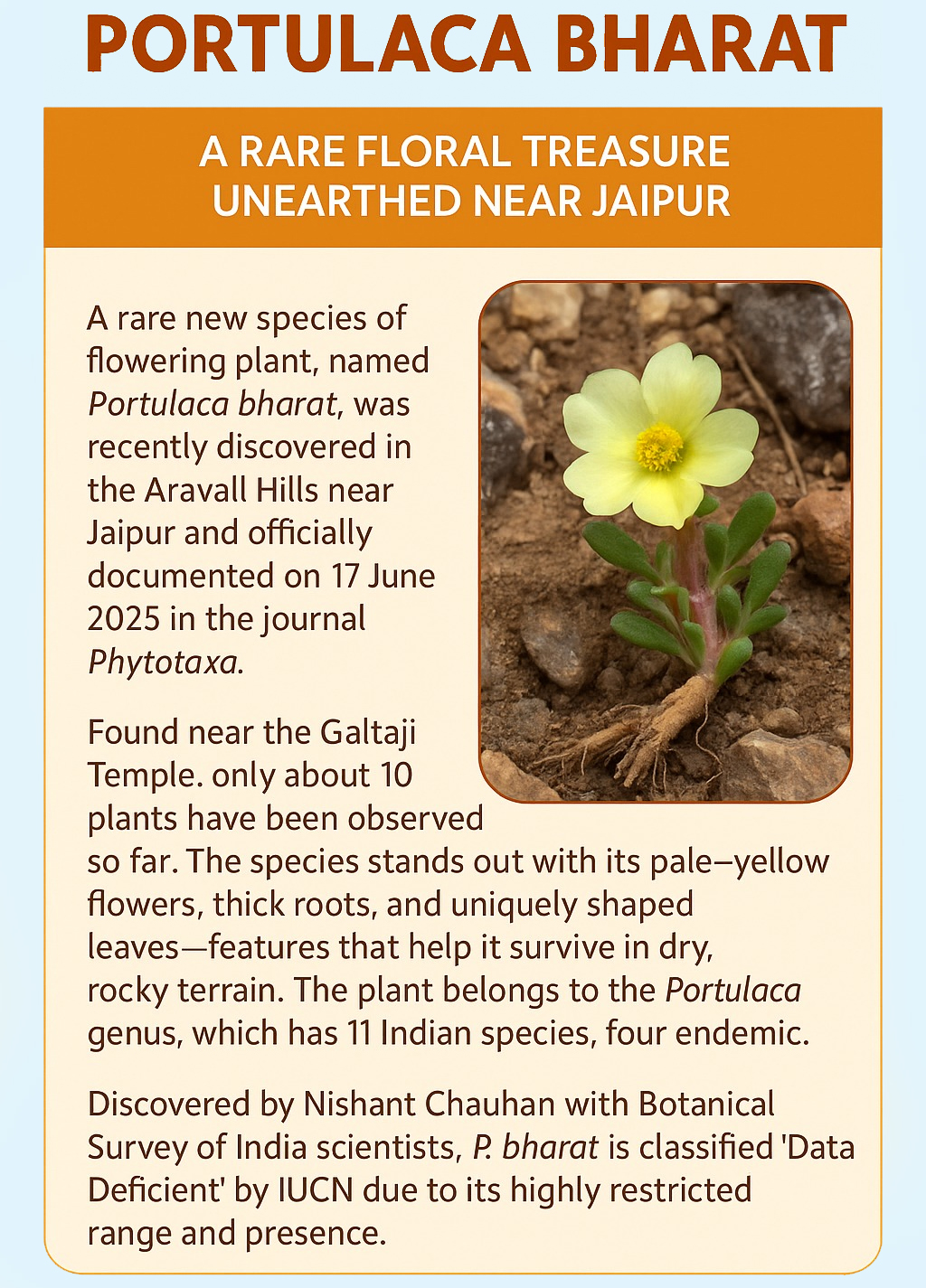Context:
A new species of flowering plant, Portulaca bharat, has been discovered in the Aravali hills near Jaipur, Rajasthan. This rare find, made in the rocky and semi-arid slopes near the historic Galtaji temple, highlights the hidden biodiversity of India’s dryland ecosystems and underscores the importance of habitat conservation in underexplored regions.
Key Highlights of the research:
Portulaca bharat is a newly discovered flowering plant species found in the rocky crevices of dry hill slopes in the Aravali hills near Jaipur. So far, only 10 individuals of this species have been found in the wild, making it extremely rare and vulnerable.
· The plant was cultivated under controlled conditions in Hamirpur (Himachal Pradesh) and Lucknow to assess growth patterns and morphological stability. Following comparison with national herbarium collections, the plant was officially confirmed as a new species.
· Due to the limited information available, it has been provisionally listed as “Data Deficient” under the IUCN Red List guidelines.
· The discovery has been formally documented and published in Phytotaxa, an international scientific journal. The research team included members from the Botanical Survey of India (BSI) based in Kolkata and Dehradun.
Botanical Features of Portulaca bharat:
- Opposite and slightly concave leaves
- Pale-yellow flowers fading to creamish-white at the tips
- Presence of glandular hairs on stamen filaments
- Thick root system adapted to arid conditions
These traits distinguish Portulaca bharat from other known Indian species within the genus Portulaca, a group of hardy succulent plants adapted to tropical and semi-arid environments.
Ecological Significance
- The genus Portulaca includes approximately 153 species globally, with 11 known from India, including four endemics.
- Portulaca bharat adds to India’s endemic flora and reinforces the ecological importance of semi-arid zones like the Aravalis.
- The Aravali Range, among the oldest mountain systems on Earth, supports unique microhabitats and is a hotspot for plant endemism.
Conservation Concerns
- With only a single known population and highly specific habitat requirements, Portulaca bharat is vulnerable to climate change, land degradation, and habitat loss.
- Researchers stress the need for targeted field surveys, in situ habitat protection, and ex situ conservation efforts.
- Dryland ecosystems like the Aravalis remain neglected in conservation planning despite their biodiversity value.
Broader Implications
The discovery of Portulaca bharat opens new directions in:
- Phytogeographical research, by tracing evolutionary patterns in dry zones
- Conservation biology, focusing on micro-endemics
- Climate resilience studies, through plants adapted to extreme conditions
Conclusion
Portulaca bharat is not just a botanical discovery—it is a timely reminder of the ecological wealth that remains hidden in India’s drylands. Strengthening conservation measures and investing in scientific surveys are essential to protect such rare species and their fragile habitats.







